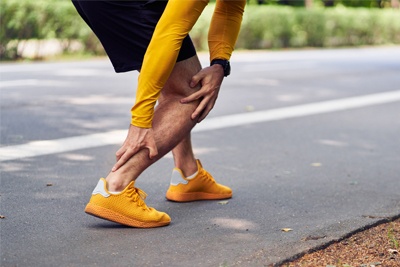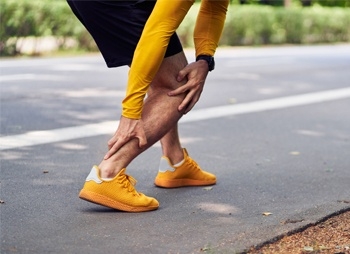
Did you know that the Achilles is the largest tendon in your body? It enables you to walk, run, jump, and move your foot in every direction. If you’ve injured or torn yours, recovery is a must. The severity of your injury, as well as your age, health, and activity level will help determine the scope of your recovery. In most cases, a fully ruptured Achilles will require surgery. There are non-surgical options for specific candidates or partial tears.
Recovering from Surgical Repair
It can take 4 to 6 months to recover from this procedure. Your overall health and weight prior to surgery will significantly affect the length of the healing process. You can expect to leave the hospital in a splint and on crutches with instructions not to apply weight to your injured foot.
Two weeks after surgery, your stitches will be removed and you will be given a walking boot. This boot will have a heel lift to hold your foot and ankle in the correct position. Around this time, you’ll begin physical therapy to help you restore strength to your foot and ankle and to regain a normal range of motion.
Around 4 weeks after surgery, the boot will be lowered to a neutral position, and you will begin walking in physical therapy.
Between 6 and 8 weeks, you’ll see your physical therapist less, and you might even be able to begin walking without the boot. At this point, you should be able to stand on the injured foot for 10-second-stretches, but you will still want to avoid any high-impact exercise.
In 4 to 6 months, you can plan to return to your normal activities. It is important to note that a full recovery, including regaining your previous strength and endurance, can take 9-12 month after your procedure.
Recovering from Non-Surgical Repair
Sometimes, surgery isn’t the best course of action. If you have certain medical conditions, such as diabetes or neuropathy in your legs, surgery might not be right for you. Your age, activity level, and the severity of the damage will also determine whether surgery is the next step. If it is determined to go a non-surgical route, you can expect the recovery to be similar to that of one who has had surgery.
After the injury, patients are in a splint for 2 weeks with crutches followed by a boot for 4 weeks.
Physical therapy will be a part of your recovery beginning at 2 weeks, as it provides pain relief, safe movement of your injured foot, and supervised strengthening exercises.
Recovery back to normal activity can take 4-6 months while a full recovery can take up to a year.
Surgical or non-surgical, recovering from a ruptured Achilles tendon can be a lengthy process. Dr. Ho is here and committed to helping you every step of the way.
Author: Dr. Bryant S. Ho is board-certified in orthopedic surgery and is trained in the operative and non-operative management of adolescent and adult foot and ankle disorders. Dr. Ho places a strong emphasis on customizing his care for each patient to ensure successful outcomes. He provides all treatment options including preventative care, conservative management, and operative intervention.
1 https://www.webmd.com/fitness-exercise/recovering-from-achilles-tendon-injury



